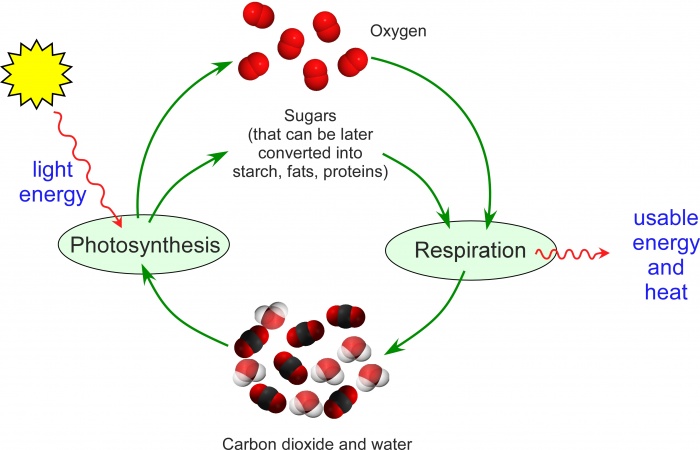Human earth shapers/ETHS101/Earthsystems/The Carbon Cycle
The Carbon Cycle
The five spheres (geosphere, hydrosphere, atmosphere, biosphere and humansphere) are all linked together, and the carbon cycle is one of the processes that links them together. The carbon cycle is a really important part of our role as Earth shapers, because it is the main controller of the greenhouse effect and global warming.
The carbon cycle links all five spheres, and explains how carbon can be changed from one form into another (carbon dioxide in the air and the ocean, carbon inside living organisms, and carbon held in rocks) and move from one sphere to another. Have a look at this infographic and then read the text below that helps explain it.
The atmosphere and hydrosphere are linked because the ocean dissolves carbon dioxide from the air, but also releases it. The amount of carbon dioxide in the two spheres reaches some sort of equilibrium depending on many different factors.This equilibrium is important because if it regulates the amount of carbon dioxide in the air.
The biosphere is really important - algae (especially single-celled algae in the ocean) and land plants absorb huge amounts of carbon dioxide from the air or the water through photosynthesis. Some of that gets stored in the body of the organisms (in fact the bodies of plants and animals are mostly made of carbon-based compounds), another part is converted back into carbon dioxide by respiration.
Photosynthesis versus Respiration
Photosynthesis uses light energy to convert carbon dioxide and water into organic carbon compounds that store energy or can be used to build the bodies of organisms. Oxygen is a vital bi-product of this process. Respiration mostly converts the carbon compounds (for example in food) and oxygen back into carbon dioxide and water. It also releases some usable energy and a larger amount of waste energy (heat). Respiration is really the use of energy by organisms to maintain their function (it is using food to fight against entropy as described in the module on Biosphere).A small amount of respiration works without oxygen (do a web search on anaerobic bacteria if you want to know more),and releases some important compounds as well as carbon dioxide. These compounds can include alcohol or acids (from fermentation), or methane (from animals guts and swamps). Methane is an important greenhouse gas (it isn't just about carbon dioxide), and is also the ultimate source of much natural gas.
Much of the carbon stored in the bodies of land plants and algae is transferred to animals, bacteria and fungi (it’s called eating!), and most of that eventually gets converted back to carbon dioxide through respiration and by "inorganic oxidisation processes" (which include fires). Note, the “decomposition” on the infographic is mostly just respiration by fungi, bacteria and some other organisms. However, a significant part of the carbon in plants and algae (and a bit from animals) gets trapped in minerals inside rocks, and will become fossil carbon. Coal, oil and natural gas are important examples. So, this is where the geosphere plays a role.
Another important way that carbon dioxide is trapped is by corals, algae and some animals who convert it into carbonate. This is what coral reefs and shells are made of. When these organisms die, the carbon can sometimes get stored in rocks, and often in the form of limestones (more geosphere).
So far, this story is mostly about storing carbon (mainly converting carbon dioxide into minerals, including oil). However, these carbon rich minerals can be converted back into carbon dioxide. One way that this can happen is really important now – the carbon trapped as fossils is burnt. That is what using fossil fuel is doing (here is the humansphere). We are worried about burning fossil fuel because it is altering the natural carbon cycle so that it changes the amount of carbon dioxide in the atmosphere and water.
Another main way that carbon stored in rocks can be released is through volcanic activity. This can release huge amounts of carbon, and create greenhouse effects just as large as those created by people. The carbon stored in rocks and in the shells of animals can also break down to release carbon dioxide, especially if it is exposed to acidic water.
